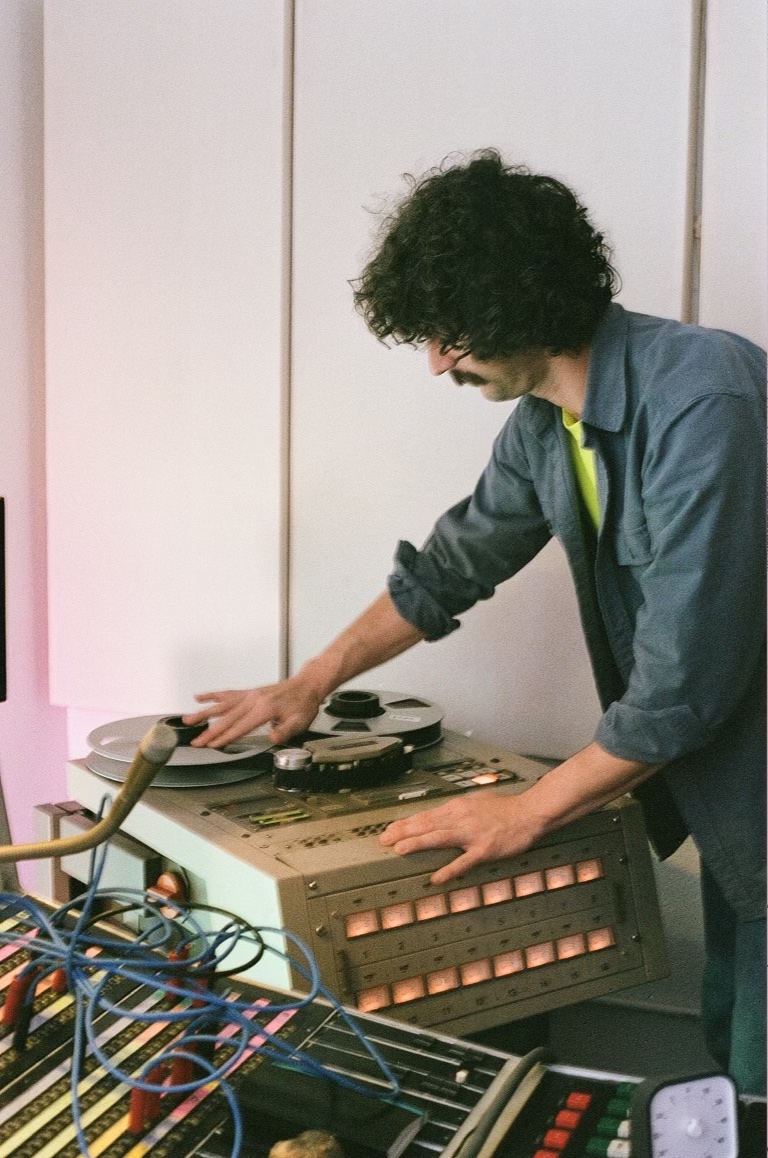
Songs are magic—whether they're simple or complex, they serve as windows into an artist's psyche. In live performance, they tend to shapeshift, adapting to both space and time. Studio recordings by comparison pose a unique challenge - how to capture said magic permanently. Setting sounds in stone can be an unnerving, vulnerable process. Finding an engineer who understands and can help execute your vision is key to a successful partnership. Producer, songwriter, and composer Ryan Oxford is acutely aware of this relationship.
Nestled in an unassuming building in the Alberta neighborhood of Northeast Portland, The Center for Sound, Light, and Color operates as both a studio and home for the Ohio native. Since the studio opened its doors in 2007, Oxford has become a pillar of Rip City’s recording community. People are drawn to The Center not for its gear list or accolades—of which there are many—but rather an ego-free approach to recording and production. His steadfast commitment to serving the song has positioned him as a highly sought-out producer and collaborator in the Pacific Northwest.
As a solo artist, a touring member of Y La Bamba, and a composer for Hello Little Wonder, his technical knowhow is balanced by high emotional intelligence. He has an uncanny ability to bring talented, kind people together around a shared goal. We recently sat down with Oxford to chat about guiding principles, his favorite gear, and what excites him about his work.
EDITOR'S NOTE: Shortly after this interview was conducted, Ryan's studio was broken into and some valuable microphones and other gear were stolen. A GoFundMe page has been created to raise money to cover the costs.
Tell me about your space - The Center for Sound, Light and Color.
Arjan Miranda—who I co-founded the studio with—came across it. We had recently met and were working on music together. We didn't expect this. Everything else we looked at was weird—a place in the back of a mechanics, et cetera. Arjan convinced us to pounce on it. That was seven years ago. Prior to us there was a guy that restored old movie posters from the thirties and forties. He had built everything out.
How did you and Arjan connect?
We met through our exes, actually. I wanted to get into doing music for film. He was already in that world. After we had lunch together I was like, "Oh, this guy has it figured out." We'd hang, jam, and eventually became closer. He's been such a guiding light for me. Someone that has a vision. His goal with everything he does is figuring out how to make something that supports everyone involved. People that have those minds always find ways to do just that. That was a big part of his involvement here—creating a creative community hub. At the time I was working in a restaurant. He showed me you could create something else for yourself—which is what I always wanted to do—but I didn't have an example.
How do you determine where a band sets up?
I'll do whatever suits the song. The live room has a sad apartment sound. It’s not perfect, kind of weird, but I like it for that reason. The room you enter through has this noisy, airy, unruly sound that can be beautiful. I consider which instruments will sound best in a certain room. Woodwinds, saxophone and piano sound great out there. With piano, instead of trying to close mic it and get a pure sound, I'll try to place it in the mix by listening in the room and micing it from there. A lot of times you don't have to do anything to it. It just sits in there. It's distant and behind everything. Ultimately it’s an aesthetic and artistic choice.
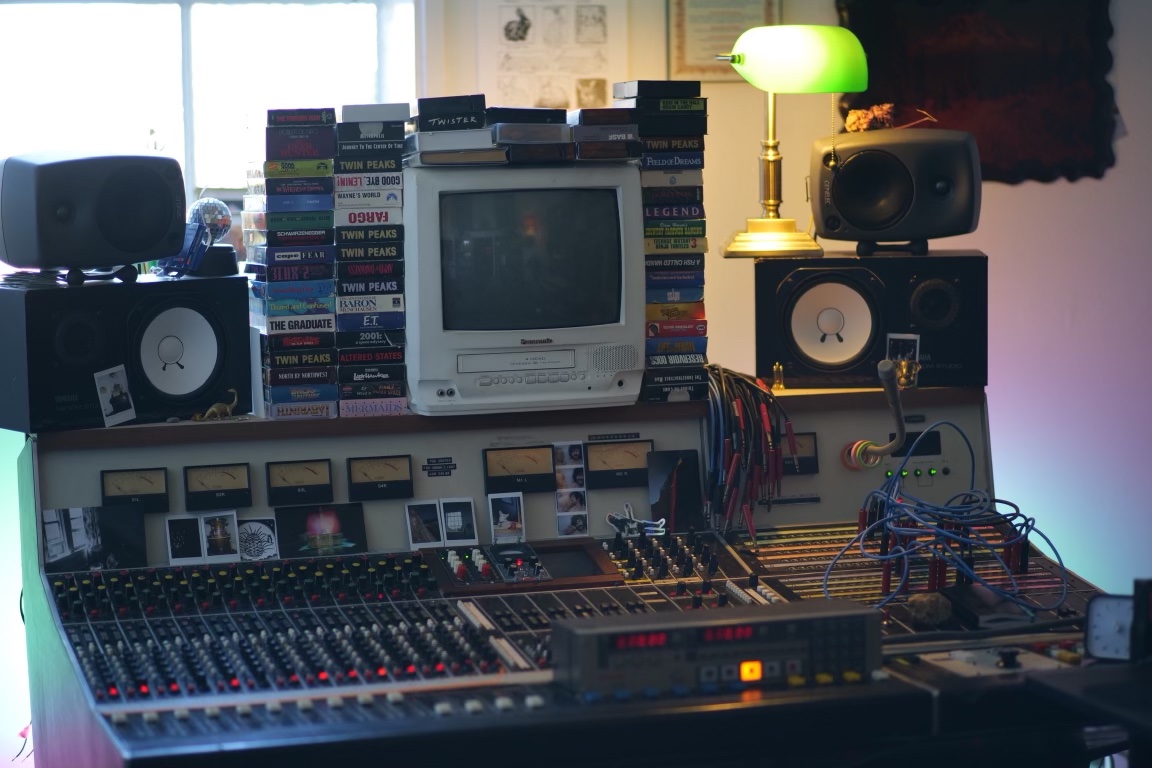
Do you have guiding principles that inform your work?
Simplicity. I'm in a phase where I've been looking back and revisiting early recordings. At that point I didn't have a lot of gear. It was very simple. When I was working on the first two Y La Bamba records, I had one vocal mic—a Mojave MA-200—which has one of the coolest sounds.
You're trying to get back to that place?
Yes, but I also see where I've grown and how far I've come. The setup has expanded. With the console I work on I can switch on an EQ, I can patch something in. I have a lot more options. I love to chase sounds, find something that sounds cool and compelling right away—I've always done that. It came from having very little, working with what I had. I'm still doing that, but know a bit more about what I'm doing and why. My recording/engineering technique and vocabulary have expanded. That's almost a hurdle in itself—I wish I knew less. When you get too technical you start to trip over yourself. It becomes more about what the engineer is doing and less about what is actually happening, what the song is about. I'm getting to a place where I want to push everything and chase the heart of what someone is looking for.
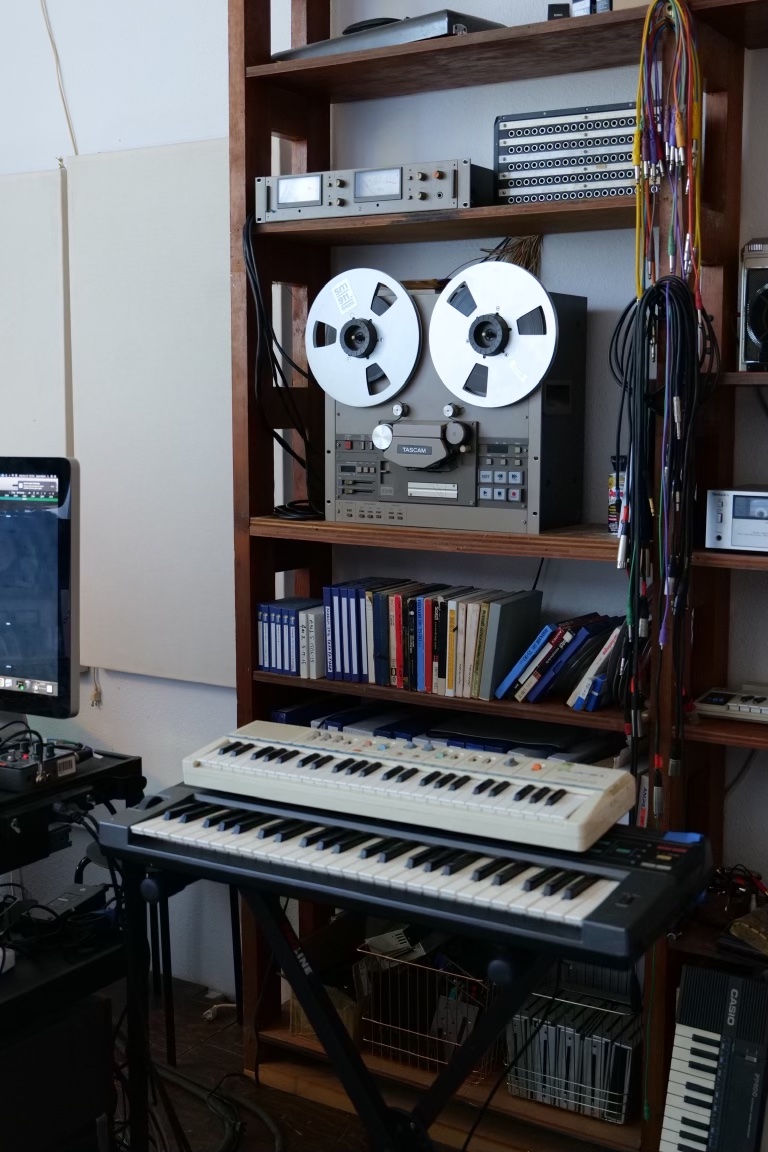
What are early examples of songs/albums that made you wonder how a sound was achieved?
I’ve always loved the guitar sound on S.E. Rogie albums. Arthur Alexander was a big one for me, the vocal sound in particular. Richard Swift for sure. Other People's Songs is one of the most beautiful recordings I've ever heard. It's otherworldly.
Your recordings help listeners to feel like they’re in the room. How do you achieve this?
I've tried different techniques over the years. On the first Y La Bamba record, we were tracking basics. It was drums, bass, Luz (Helena Mendoza) was singing, and I was playing guitar. The drum sound we were getting in her vocal mic was way more interesting than everything else going on. From that moment I started experimenting with dynamic mics as room mics—in corners, on the floor, wherever works.
How do you navigate holding multiple roles (producer, engineer, mixing engineer, etc.) during a session?
Some records call for that combination of skills. Maybe it's just me and one other person—they can play guitar, bass, and keys and might have me on drums. There are times where it can turn into this fun game. It's sort of like recording on tape. You're forced into a situation where you have to accept what it is. It turns into a challenge. A lot of times people respond well to it.
There's this push-pull that exists with a lot of artists I work with, they are viewed as being in a certain genre they don’t necessarily identify with. They think they can do more, but don't quite know what that is yet. I love being the one to help them get there. A singer-songwriter might normally be recorded in a naturalistic way. I love figuring out how to make it sound surreal, like a dream. Sampling has been a huge part of that, using drum machines—making an instrument sound like something else entirely.
Is your SP-404 part of that process?
Yeah—with guitar, things can sound cliche or corny quickly. Especially when you get into lead guitar. Some people are great players, but on some level it’s all been played. Instead I’ll ask, why don't we take that fuzzy, sick guitar tone and resample the notes. Turn it into a toy. All of a sudden it's a natural sound that you're playing in a way that isn't "real" and is different from how you ever would on a guitar. It doesn’t work out sometimes but when it does, it's wonderful.
This could also be a tool for arrangement.
Absolutely—on guitar, you have muscle memory of the way to play. This is where the G chord goes, put the C chord here. If you don't have that context, your approach will be different. The pattern, how notes or chords are laid out on the pads might not make sense. It’s more of a challenge, but you’re opening up new pathways in your brain.
How does your approach differ between newer vs more established artists?
I've worked with a full spectrum of artists. I don't want to push anyone too hard. I'm more bold and experimental with people that haven't been in the studio much. More conservative with people that are experienced and know what they want. Regardless, there's always exceptions. The studio is an instrument. We can use it to capture things live just as they are or to transform sounds entirely. I'm in a phase where I want to do the latter. I'm coming out of a period where I was doing a lot of recordings live. I see why that's great, but I also see the complications.
Do you feel a sense of responsibility to your artists?
Absolutely—although it can be hard to understand exactly what the responsibility is. Everybody has different needs. It's important to make sure that everyone, especially the songwriter, has space to express how they feel. To be able to say that if things aren't working out, it's okay, we can try something else. That’s the most important part.
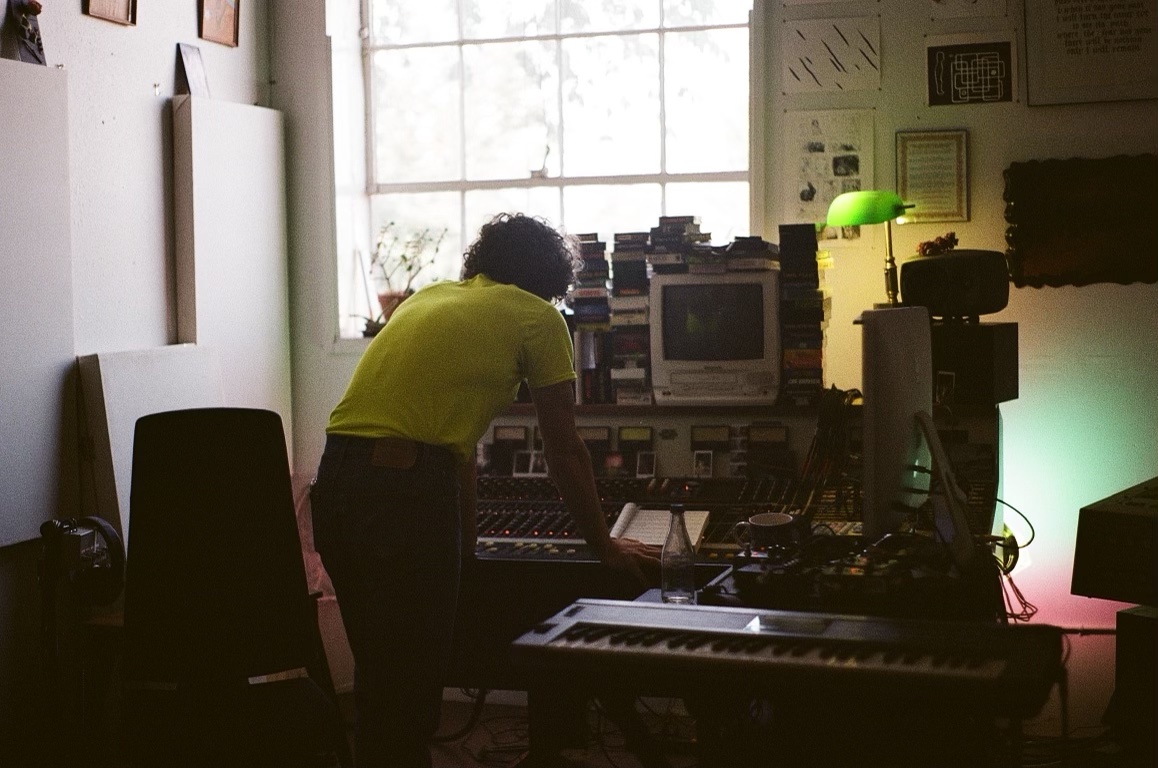
What console are you working with?
It's a Ward-Beck. It sounds great. It’s fun to record everything through it to create cohesiveness. That’s important. I like using those preamps—again, simplicity. Ward-Beck is a Canadian broadcast company from the late seventies or early eighties. They were all custom for radio stations. I don't think there's another one like it. It's been customized by my friend Justin Morris. He built a monitor controller, put a 500 series rack in it and modded some of the channels.
What were you using previously?
Honestly it wasn’t much - an Apollo and a couple pairs of Great River preamps. I still have one pair that I use. There was a time where we had a bunch of outboard gear - nicer pieces like APIs and a Neve. I admit, it sounded really good.
What’s your take on having or needing "high-end" gear?
It can be important, but you can make boring recordings regardless of what equipment you're using. I don't care much about what I have. It's all tools and toys. I’m more into microphones, effects pedals, old drums and guitar amps. That is way more interesting to me. I like to have good preamps, and I think the word beck sounds really cool. I'm not gear obsessed where I think I need fancy gear to make great records. It's not true. I just need cool people and weird sounds.
You’re a big fan of Strymon pedals. Which are go-tos for you?
I love the El Capistan—to me it's the best sounding guitar pedal that's ever been made. I use it for everything. On vocals, on drums. For live performances I love using the Flint. I turn the reverb all the way up and just use it as a wash, it sounds so cool.
Which tape machine are you using?
A Tascam MS16. Nothing crazy fancy, but it sounds beautiful. We've had it for probably seven years. I use it almost every day. Thank God it's still running. It’s just perfectly fuzzy. It's got this big, round, warm sound, but it's strong. It's not transparent, a ton of character.
How do you use it creatively?
Adjusting tape speed. Recording drums on it, slowing them down and then either resampling them or just having the band play the song really fast so we can slow it down to the tempo they want to play it in. The way it drops the drums down is so cool. Anytime I do that for someone, it’s always a big ‘whoa’ moment. Showing them how we can manipulate it and figure out what tempo it needs to be played at then what key it's gonna drop it to. It reshapes everything. Now the harmony is the main vocal because the lead vocalist can sing the harmony. It goes back to making a track dreamlike, something magic. It’s a trick - to change something profoundly where no one will ever know what you did. You have to make an imprint on an artist in that way. Their emotions behind the creation of a song are always gonna be tied to it. I want to do whatever I can to help an artist keep that.
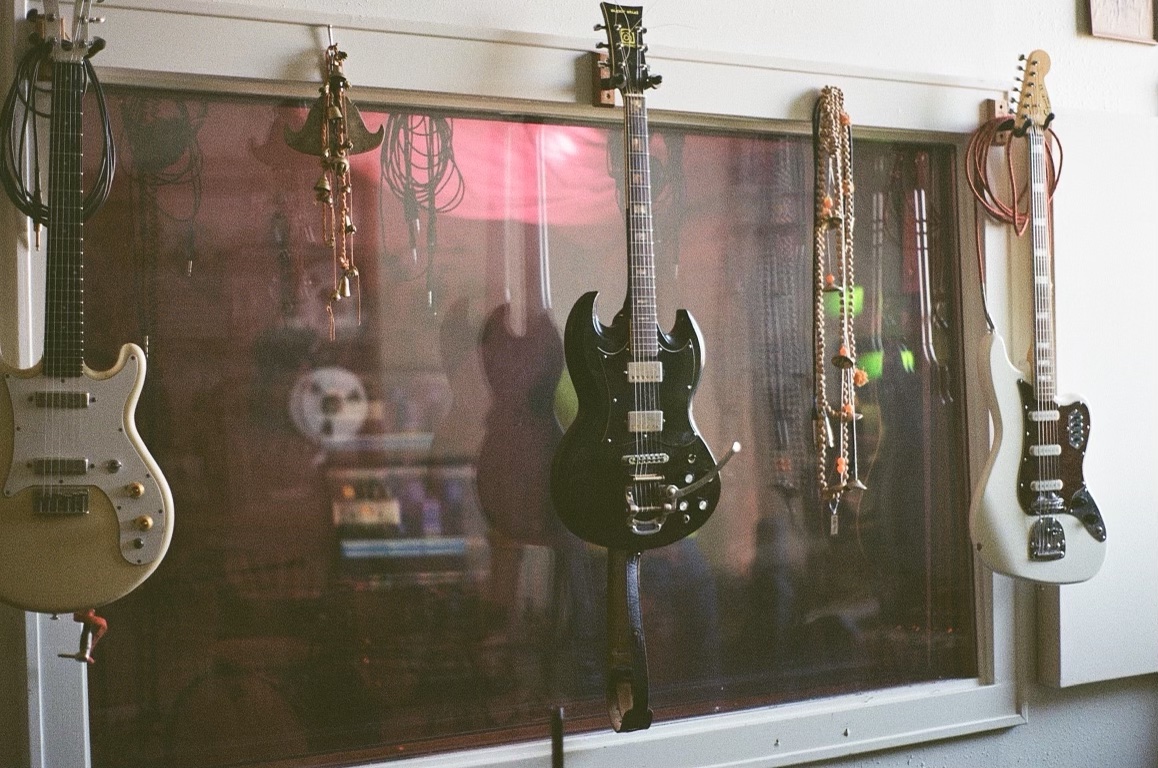
How do you know a session was successful?
When we make a song where the artist is like, "I didn't think I could sound like this." That’s what I’m going for.
Do you have a memory of someone doing that for you?
I was in this band called The Walkies—this is forever ago—the guy I was writing songs with was my friend Scott Harlow. He was and still is a genius. It was my intro to being in a band and recording. He was so brilliant and sweet. He could play everything well and he would write a song and know immediately, "This is how the drums go, this is how the bass goes, and this is how the other guitar part goes, and the vocals will be doing this." He was the first person where I really appreciated his approach. He got me thinking. That was kind of the start. We bought a Tascam 388, just a game changer for me. I realized that recording was a songwriting tool. It was a part of that process. I'm glad it started that way, with ust eight tracks. You really think about what you're gonna do. Yeah. There are these limitations, but it's beautiful.
Where do demos come into play for you?
Noisy iPhone recordings or cassettes wind up sounding the best to me. I just love them and will even incorporate them into final mixes. Oftentimes people will blend in a little bit of that distortion. For me, I want that to be the main sound.
You don’t label it as an ‘uglier’ sound or something to be removed.
It could be awesome. I don't like to polish everything out.
What are the challenges of being a freelance engineer in 2022?
The challenges of anybody in the music business in 2022 are extremely real and pretty grim, from being on the road to being in the studio. I'm just thankful that I can be here and do this.
